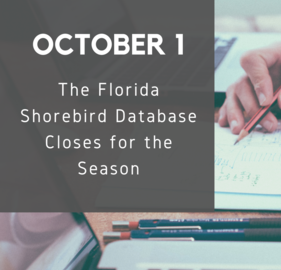
The FSD closes for the season on October 1!
Be sure to enter your monitoring data before the FSD closes for the season on October 1. Remember, every observation contributes valuable information about breeding shorebirds and seabirds – even if the observations occurred outside a count window.
As nesting season comes to a close, we ask you to take some time to double-check the data you entered this year. Here’s a quick checklist of things to look for:
Are the site locations correct?
Check to make sure the sites are not located in the water or in heavily vegetated areas. If the location is correct but the image is old, please add a comment confirming that the location is correct.
Do all of the sites have a Final Outcome?
If the final visit to any site (solitary nest, ground colony, or rooftop) is ‘Active’, be sure to enter another visit that indicates the site’s final outcome.
Don’t forget: for solitary sites, the nesting outcome ‘Complete’ means that the eggs hatched. If there isn’t a roving chick record to confirm that the nest hatched, please include a comment detailing the evidence that led you to mark the nest as complete. If chicks are never observed and there was no evidence to confirm a successful hatch, mark the nest as ‘No chicks left the nest’ or ‘I don’t know the outcome of this site.’
Are your count types correct?
Remember: for colony and rooftop sites, if you could see the entire colony or rooftop, your count type is probably Direct. If you couldn’t see the entire colony or rooftop and you had to do a little bit of math to calculate the count, your count type was an Estimate count. If you’re unsure, you can consult our handy Quick Guide to Count Types.
Are there any other typos?
Look for duplicate entries, counts that seem out of place, or any other possible typos in the data.
Thank you for another dedicated season of shorebird monitoring! Please email FLShorebirdDatabase@MYFWC.com for support.
|